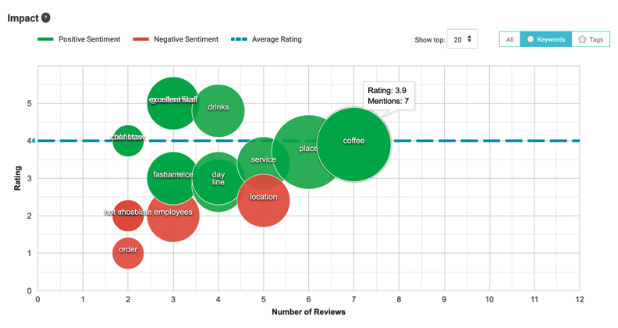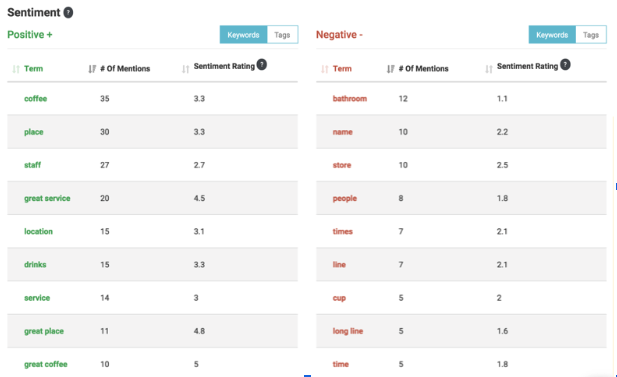Sourcing high-quality candidates to fill your business’ empty positions will always be a challenge. But these days, it’s becoming even harder to find and attract top talent. This is down to multiple factors but often it’s a result of differing business and candidate expectations.
Today we’ll look more closely at the mismatch between employers who are hiring and people searching for jobs, and how GatherUp can help employers solve these challenges.
What is the Great Mismatch?
In a Vox article Tim Brackney, president and COO of management consulting firm RGP, refers to the current disconnect between the number of employers hiring and unemployed people searching for jobs as the “Great Mismatch.”
That mismatch refers to various things like skills, experience, and desires. Part of the mismatch is down to the fact that skills are rapidly changing as companies start following different work habits, change software, and prioritize different client needs.
According to the Bureau of Labor Statistics, there are 8.4 million potential workers who are unemployed, but it also says there are a record 10.9 million jobs open.
The rate at which unemployed people are getting jobs is lower than it was pre-pandemic, and it’s taking longer to hire people. At the same time, job seekers say that companies are unresponsive to them.
So how can employers better attract the skillset they need to meet customer demands? The key lies in better understanding the exact skills your business needs to grow.
The Great Mismatch in hiring and job searching
So that your business doesn’t suffer the consequences of this mismatch in hiring and job searching expectations, it’s important to dive into what it is your business needs to achieve in hiring new employees and customer success. You need to refine the exact items that your business needs to improve or modify.
The key components your business needs to succeed will depend on your unique model and customer base. But these essential components can usually be divided into three categories.
1. Service
Customer service is the backbone of solid customer experience. It’s often what differentiates local businesses and encourages customers to return and refer your business.
Customer service includes everything from your in-person interactions, phone calls, emails, and social media responses.
If your customer service isn’t where you’d like it to be, it’s important to refine this side of your business.
2. Better products
Instead of constantly adding more products to your offering, sometimes it’s best to just improve the ones you’re already selling.
Are your customers happy with the products you currently offer or do you receive complaints?
Knowing more about your customer preferences will help you shape your offering to match their needs.
3. More streamlined processes and operations
While your customer service might be generally good and people are happy with your products, your processes or operations could be letting your business down. For example, customers might be satisfied with the attention you give them once they’re in touch with your business, but it might frustrate them that they have to use an online ticket system to get their queries resolved.
Evaluating your processes and operations will help you better understand what your customers need and how you can shift your business to match their expectations.
Use customer feedback surveys to understand where your employment needs lie

The best way to meet customer expectations and successfully grow your business is to identify what it is exactly that your customer base expects from you.
Do they want to see more physical locations of your grocery store in a nearby town? Would they prefer longer opening hours on a Saturday? Or do they feel your staff don’t always answer their questions properly?
Answers to questions like these will help you better understand which areas of your business to focus on and how you can make better future hiring decisions to help you achieve these aims.
Make it a priority to schedule quarterly or monthly customer feedback surveys so you can get regular insights into how your customers feel about your business. Ask a mix of open and closed questions. If you use NPS surveys, make sure to always follow up with questions for the biggest detractors and promoters of your business.
A great example of this is laid out in our article “How one business made a mess of masking.” Successful businesses listened to customers voicing opinion on masking policies and adjusted or communicated in a new way. It helped drive a change that resulted in better customer outcomes.
Use GatherUp features to streamline your customer feedback requesting process
On top of using GatherUp to request customer feedback and automate follow-ups, there are a whole host of features to make it easier to organize and analyze your customer feedback responses to better know where your hiring and retention challenges exist.
Customer Activity
Customer Activity shows account details and metrics as well as activity, ratings, and reviews for 1st and 3rd party reviews. You can quickly review and take action from a single screen. If you’re running a mix of customer feedback surveys and NPS surveys, this screen is helpful for compiling all the data in one place.
You can see customer profiles, look at the status, and source of every response you receive.
Manage each response and reply to individual customers to gather more details if you need them.
Access to this feature makes it easy to get a quick overview of customer sentiment as well as which topics appear in their feedback most frequently.

Auto-Tagging
Auto-Tagging identifies specific keywords in 1st and 3rd-party reviews and customer feedback. Tags can then be used to filter data in Customer Activity and create a Tag Widget. Using this feature helps you identify common themes throughout your customer feedback. You can then group this feedback together and work out your next steps for addressing it.
This feature is particularly helpful when you receive multiple feedback responses at the same time and need an easy way to streamline your data.
If you’re having retention challenges one best practice would be to create a reward system for employees. Create a tag for each employee’s name. Encourage employees to ask for reviews. They can even say things like “My name is John. You will receive an email asking for feedback. It’d be great to know how I did today.” Whenever that person’s name is mentioned in a 5-star review they get a gift card. Or gamify it and create a leaderboard of employees mentioned in 5-star reviews.
Another use case would be to create tags or even profiles based on different parts of your sales process. This helps identify when the issue happens and you can work to address that single point of contact, rather than worry about the entire customer journey. For instance, a landscaping company might ask for feedback at the following stages: consultation, design, install and job completion.

Insights Report
The Insights Report uses AI to surface keywords in customer feedback and review content to help you uncover new information.
Presented as a visual chart, the Insights Report highlights discovered keywords and how they impact your overall ratings, reviews, and reputation. It’s a valuable tool for better understanding customer sentiment and what elements of your business are helping increase customer satisfaction and which factors need attention to better match customer expectations.

The Sentiment section is particularly helpful for understanding customers’ feelings about certain keywords. The feature assigns sentiment to each keyword, clearly showing you how customers feel about different elements of your business.
For example, if you find “time” is often in red or mentioned in a negative light, it indicates your team needs training on speed and efficiency.
“GatherUp is a force multiplier for our franchise owners to scale their reputation management beyond the normal capabilities of an individual or team. The efficiencies gained through GatherUp have enabled franchise owners to dedicate additional staff hours to direct positive client and caregiver engagement based off the increased reviews received.”
Matt Ericksen, Director of Sales & Operations at Griswold Home Care. Tweet

Use GatherUp to solve the hiring mismatch
Once you know which elements of your business require improvement or more focus, you’ll find it much easier to identify which skills are most important to your business’s future. That way you can hire for those skills. Potential candidates will know what you’re looking for and will be able to decide if it’s the right match for them.
You’ll attract more like-minded team members and people who are suited to your business values and goals. Knowing what you’re looking for from new hires and how to attract them will help prevent you from experiencing the “Great Mismatch.”
Ready to start solving your business’s employment issues? Sign up for a GatherUp demo today.
Related reading:
